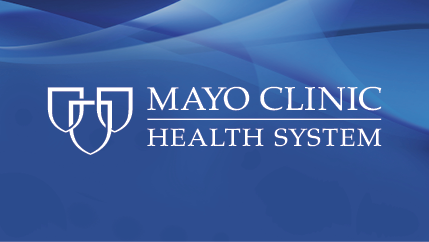Recent Posts
PAD: The other arterial disease

The body has two types of artery systems: the coronary artery system, which relates to the heart, and peripheral artery system, which involves the arteries carrying oxygenated blood to the arms, legs and brain.
Just like coronary arteries, peripheral arteries can become diseased. This condition, called peripheral artery disease, or PAD, narrows arteries and reduces blood flow due to a buildup of fatty deposits on the artery walls. This can cause claudication, which is muscle pain and cramping when a person is active but usually disappears after a few minutes of rest.
If this sounds familiar, take a few minutes to learn more about PAD.
Who's at risk for PAD
People who smoke or have diabetes at any age are at the greatest risk for this condition. Other risk factors include:
- Body mass index over 30
- Family history of PAD, heart disease or stroke
- High blood pressure
- High cholesterol
- Increasing age, especially if you are age 65 or older
Recognizing PAD symptoms
In addition to claudication, other symptoms of PAD include:
- Aching or cramping in the arms when knitting, writing or performing other manual task.
- Change in the color of your leg or arm
- Coldness of the lower leg or foot
- Sores on the toes, feet or leg that don't heal
- Weakening pulse in the foot
- Erectile dysfunction in men
- Hair loss
If arteries in your brain are affected, symptoms may include dizziness, weakness in the arms and legs, or loss of consciousness.
If you experience any of these symptoms, make an appointment with a cardiologist, who will conduct a physical exam and record your health history. The exam will include finding a pulse in the affected limb and comparing it with the pulse in the unaffected limb.
PAD treatment options
Cardiologists have a wide range of tools available, depending on the degree of your symptoms, to help you return to the activities you love. For example, if you can walk a few blocks with only mild pain, they may prescribe medications including aspirin, statins or blood thinners. They also may discuss ways you can modify your risk factors, such as quitting smoking; controlling blood pressure, cholesterol and diabetes; and increasing your activity level.
If you have more significant symptoms, such as not being able to tolerate the pain when walking, a cardiologist typically will order a CT scan with contrast, an ultrasound or an angiogram to determine the location and degree of the blockage.
To relieve the blockage, your cardiologist may refer you to a vascular medicine specialist or proceduralist who will conduct an arterial angioplasty. In this procedure, a tiny balloon is inserted into the artery and expanded, pushing the blockage into the arterial wall. At the same time, the balloon can leave behind a stent, which acts as a support for keeping the artery open. The stent itself may contain a drug that helps keep the artery open.
To break up a blockage, the vascular proceduralist also may inject a clot-dissolving drug into the artery where the clot is located.
An untreated blockage can progress and completely interrupt the flow of blood to the affected limb. This loss of blood supply can lead to severe pain even when a person is resting, ulcers, gangrene — and eventually could require amputation.
Prevention is the best treatment
If you have one or more risk factors, you can take action to prevent or stop the progression of PAD.
The best way is to adopt a healthy lifestyle by:
- Avoiding certain over-the-counter cold remedies that contain pseudoephedrine. These medications, which include Advil Cold and Sinus and Aleve-D Sinus and Cold, constrict your blood vessels and can increase your symptoms.
- Not smoking or quitting if you do smoke.
- Eating the rainbow by consuming a plentiful array of colorful fruits and vegetables.
- Exercising regularly, aiming for 30 to 45 minutes several times a week.
- Keeping your blood sugar under control if you have diabetes.
- Maintaining a healthy weight.
- Managing your blood pressure and cholesterol levels.
Next steps:
- Find a cardiologist near you.
- Find a vascular medicine specialist near you.
- Discover how cardiac rehabilitation can improve your vascular health.
- Join our Journey to Wellness program to improve your overall health and wellness.
Michel Barsoum, M.B., Ch.B., is a cardiologist and vascular medicine specialist in Chippewa Falls, Eau Claire and Rice Lake, Wisconsin.




